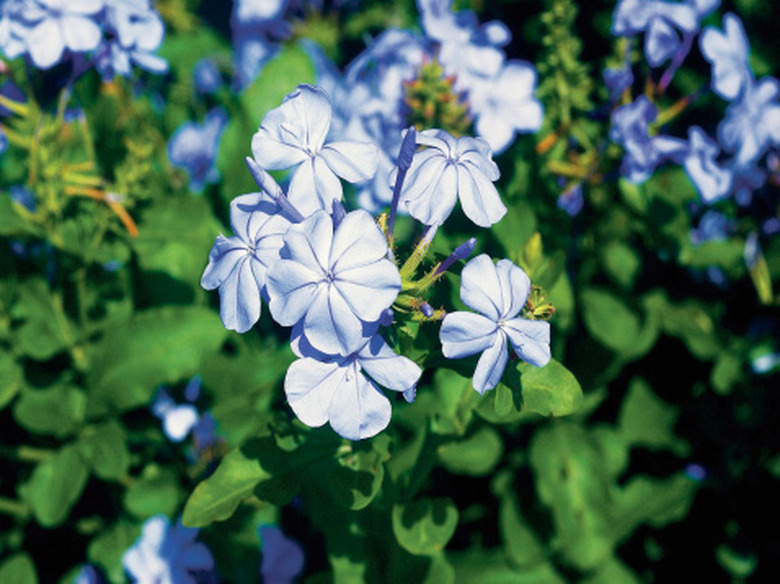What Kind Of Fertilizer For Plumbago Plants?
Plumbagos are tropical blooming plants prized for their true-blue blooms, although some cultivars bloom white. They tolerate mild droughts and bloom most of the year in areas warm enough for them to survive — namely the southernmost regions of the Southern states as well as coastal regions. They need very little help from fertilizers to thrive.
To Fertilize or Not to Fertilize
Plumbagos are a low-maintenance garden and landscape plant. They survive, grow and bloom in even the most trying soils, though they'll certainly perform better if the soil is healthier. But if the plant is producing green leaves and blooming, it doesn't need fertilizer. Fertilizing when it is already healthy only encourages the plant to put on an abundance of weak growth that is more susceptible to attack from insects and damage from extreme weather.
- Plumbagos are tropical blooming plants prized for their true-blue blooms, although some cultivars bloom white.
- They survive, grow and bloom in even the most trying soils, though they'll certainly perform better if the soil is healthier.
Organic Fertilizer and Compost
Planting plumbagos in compost-rich soil precludes the need for most fertilizers. But organic fertilizers give plumbagos a gentle boost when they're growing very slowly or when their leaves are yellowing from lack of nutrition. The organic fertilizer should have a balance of macronutrients — nitrogen, phosphorus and potassium — and have plentiful micronutrients as well to ensure that trace nutrient requirements are also met. Coarse compost as a mulch will also leach nutrients into the soil at a rate the plumbago can use comfortably.
Chemical Fertilizer
If you do want to promote blooms, use a 10-30-10 fertilizer. The three numbers represent nitrogen, phosphorus and potassium, respectively. The phosphorus is the highest of the three, and this is the macronutrient that helps promote blooming. Chemical fertilizers should not be applied or spilled onto any foliage because they tend to burn it. They should be watered gently into the soil after application to avoid runoff, which wastes the fertilizer and causes pollution.
- Planting plumbagos in compost-rich soil precludes the need for most fertilizers.
- But organic fertilizers give plumbagos a gentle boost when they're growing very slowly or when their leaves are yellowing from lack of nutrition.
Considerations
A soil test will reveal if the soil has any nutritional deficiencies. The most common deficiencies that cause noticeable problems in plumbagos are iron and nitrogen deficiencies, since these turn the leaves yellow. Alkaline soils will keep plumbagos from absorbing nutrients, even if they are present in the soil. In these cases, a soil acidifier should be used instead of a fertilizer.
References
- "Gaia's Garden: A Guide to Home-Scale Permaculture"; Toby Hemenway; 2006
- "Tropical Shrubs"; Horace F. Clay, et al.; 1987
